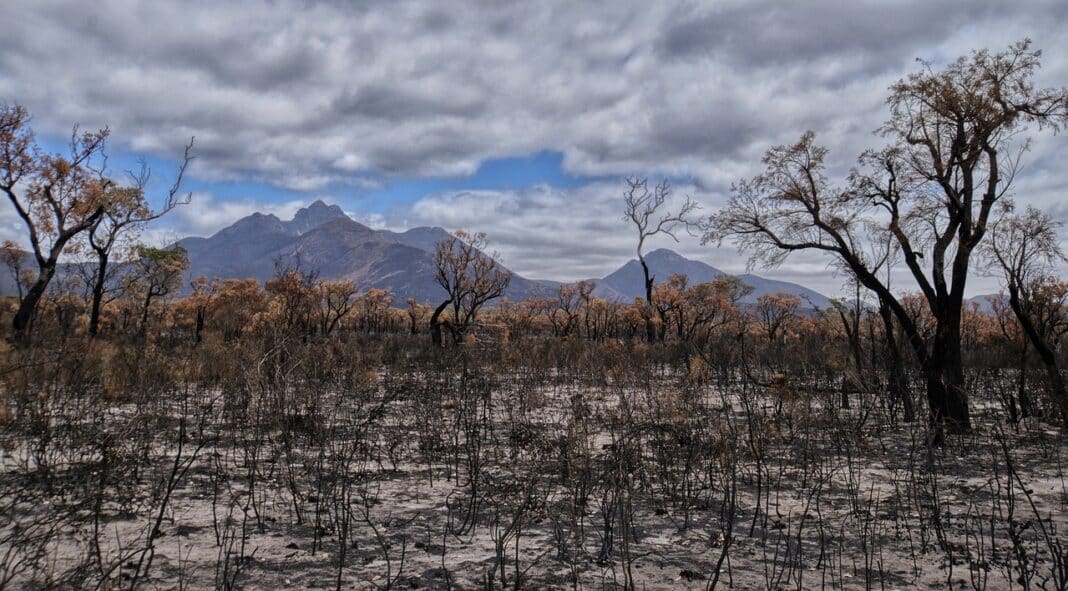Australia is rapidly losing forests to mega-fires; with governments slow to replant new seeds in time to regenerate its forest canopy. Now, scientists are pushing governments to ramp up seed replanting programmes and look to plant a more diverse range of tree species in burnt forests.
It comes as a new round of studies, funded by the Victorian Department of Energy, Environment and Climate Action, studied how plant understory responds to more frequent and severe fires across various forest types.
Led by Sabine Kasel, Dr Tom Fairman, Dr Benjamin Wagner and Associate Professor Craig Nitschke, all from the University of Melbourne, the studies examined the impact of mega-fire on Victorian forests, looking at the soil seed bank, “the insurance reserve of plant diversity in the event of something catastrophic happening to the living understory plants.” And in a world of frequent severe fires, “that calamity is becoming a reality,” the researchers said.
“We found across all of these forest types; there was a shift in plant community composition—both in the living vegetation and the soil seed bank,” the researchers said. “If we look at the living plants of the understory, more frequent severe fires have led to a decline in plant diversity at the lowest and highest elevations.”
They also noted that the character of the understudy changed.
“With more fire, there’s a shift towards grassy and herb-dominated understories, particularly at higher elevations—as many shrub species fail to cope with frequent fire.”
“Across all forest types, we found a decline in the diversity of the soil seed bank —which suggests that frequent fire erodes the seed bank’s role in the forests,” they said. “This erosion in the buffering capacity of soil seed banks points to an increase in reliance on other mechanisms for maintaining plant diversity.”
“These mechanisms—including post-fire resprouting, or long-distance dispersal from areas protected from fire—favour some species over others, producing a shift in the species that make up understory communities.”
The changing character of Australian forests
The research showed that fire regimes are changing the very character of forests—not just the trees but also the shrubs, grasses, herbs, and soil seedbanks.
“These changes in the type and diversity of species shouldn’t only concern botanists” but “also have consequences for the animals that rely on that habitat, and more broadly, consequences for the flammability of these systems—which may lead to more fire—which continues to compound the problem.”
Currently, when forests are burnt, the government acts to resow those areas with the tree species that have been lost—predominantly mountain ash and alpine ash— “but the research highlights a possible need to broaden this approach.”
“With more frequent fires changing the composition of our forests’ understory, we may need to include important species at risk of being scorched out of existence by frequent fires.”
However, the biggest challenge is collecting enough seed.
“This would require a multi-pronged approach, including harvesting seed from the wild and establishing seed orchards for a wide range of species.”
Another is the massive scale of the problem.
“Given that frequent fires erode understory diversity across multiple forest types, the scale of the restoration challenge is much greater than that of current efforts to restore overstory species. If we wish our forests to be resilient to future fires, we will have to get used to giving them a helping hand along the way.”
For More information
- Sabine Kasel et al, Short-Interval, High-Severity Wildfire Depletes Diversity of Both Extant Vegetation and Soil Seed Banks in Fire-Tolerant Eucalypt Forests, Fire (2024). DOI: 10.3390/fire7040148
- Emily Duivenvoorden et al, Short-interval, high-severity wildfires cause declines in soil seed bank diversity in montane forests of south-eastern Australia, Forest Ecology and Management (2023). DOI: 10.1016/j.foreco.2023.121627






